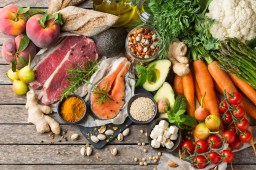The Ultimate Guide to Decoding Food Labels: What Every Shopper Should Know
Navigating the grocery store can be overwhelming, especially with the plethora of food products available today. Understanding food labels is key to making healthy choices and ensuring you’re purchasing what you truly need. In this ultimate guide, we’ll break down the essential components of food labels and what every shopper should look for to make informed decisions.
Understanding Serving Sizes
One of the first things to look at on a food label is the serving size. This tells you how much of the product is considered one serving, which directly affects all other nutritional information listed on the label. Be mindful that many people consume more than one serving at a time, so it’s important to adjust your intake accordingly if you do. For example, if a cereal has a serving size of 30 grams but you pour 60 grams into your bowl, you’ll need to double all nutritional values like calories and sugar.

Nutritional Information Breakdown
After understanding serving sizes, dive into the nutritional facts panel. Here you will find key nutrients such as calories, total fat (including saturated and trans fats), cholesterol, sodium, carbohydrates (including sugars and dietary fiber), protein, vitamins, and minerals. Aim for foods that are low in saturated fat and sodium while high in dietary fiber and protein. Familiarize yourself with daily values (%DV) that can help guide your choices based on a typical 2,000 calorie diet.
Ingredients List: What’s Really Inside?
One of the most important aspects of food labels is the ingredients list. Ingredients are listed in descending order by weight; therefore, if sugar or unhealthy fats appear near the top of this list, it’s wise to reconsider purchasing that product. Look for whole-food ingredients like fruits and vegetables rather than artificial additives or preservatives. The fewer ingredients there are — especially those that are recognizable as whole foods — often indicate a healthier option.
Recognizing Health Claims
Food labels may also contain health claims such as ‘low-fat,’ ‘sugar-free,’ or ‘organic.’ While these terms can provide helpful insights about nutrition quality or production methods, they can sometimes be misleading. For instance, products labeled as ‘low-fat’ might compensate with added sugars to enhance flavor. Always check back with other details on the label instead of relying solely on these claims.
Allergens: Stay Informed
Lastly but importantly, always check for allergen statements which are usually found at the bottom of food labels under ‘Contains’ or similar wording. Common allergens include nuts, dairy products, gluten-containing grains such as wheat; being aware of these is crucial for those who have allergies or intolerances. It’s best practice to familiarize yourself with potential allergens even in seemingly harmless foods.
Decoding food labels doesn’t have to be daunting. By paying attention to serving sizes, understanding nutritional information breakdowns while examining ingredient lists carefully along with recognizing health claims and checking allergens – shoppers can make better decisions about their diets. With this knowledge in hand from our ultimate guide on decoding food labels you’ll feel empowered during your next grocery shopping trip.
This text was generated using a large language model, and select text has been reviewed and moderated for purposes such as readability.











